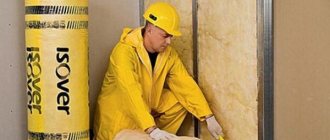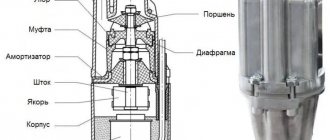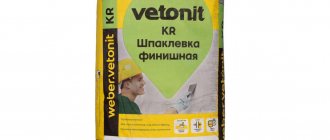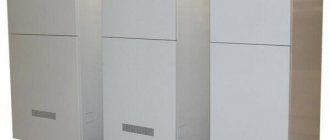Almost no stage in construction can be completed without polyurethane foam. It turns out that this material is in great demand. But for this there are different types of polyurethane foam and each of them has its own characteristics, is distinguished by individual characteristics, and sometimes by area of application. We propose to examine in more detail all the nuances of the sealant in this article.
Single-component polyurethane foam for use in construction Source onlinetrade.ru
Polyurethane foam: what it is and how it works
Foamed polymer is a universal material that hardens very quickly in the open air. We suggest studying the description of polyurethane foam, its composition and principle of action. The polymer is produced only in metal cylinders in which it is under high pressure. The foam inside the tank is in a liquid state.
What does polyurethane foam look like after being squeezed out of an aerosol can Source hlamer.ru
Ultimate shear tension:
This parameter is usually expressed in terms of foam , i.e. its ability to perceive and withstand certain mechanical loads that affect their deformation or change in the final volume. Even foams whose films are quite liquid exhibit pronounced rigidity, because with any, even insignificant, external influence, the minimum surface energy responsible for the state of equilibrium of the solution increases.
Types of polyurethane foam
For each manufacturer, the types of foam may differ not only in performance characteristics, but also in internal composition and even in area of application. We suggest exploring the possible options so that, in the future, when choosing them, you do not make mistakes:
- Household. One of the most common types. The bottle with this foam comes with a tube that allows you to fill any hard-to-reach places. This part helps eliminate the need to use a special mounting gun. The secondary expansion rate of this type of material is usually very large, but the output volume is maximum. A common practice is that the gas runs out much earlier than the polymer itself, so all that remains is to throw away the half-used cylinder. This is disadvantageous.
- Professional. A higher quality type of polyurethane foam, used for large-scale work. For example, if necessary, install metal-plastic windows, double-glazed balcony windows, and install window sills. The product cylinders are equipped with a special ring valve. It is necessary for screwing the mounting gun to the container. After installing the reservoir with the polymer in the nozzle, the foam passes into the latter until it stops at the cutter. The valve itself is subsequently controlled by a trigger when it is necessary to fill voids.
- One-component. This type of material consists only of polymer and extrusion binders. It is the simplest and is used for everyday needs and general use. Considered affordable.
- Two-component. Another variety with a small area of application. Also, this composition cannot be found on the open market, but is provided exclusively on order. To work with such a composition, you need to mix two components, and this requires special skills. After preparing the composition, it must be used quickly to avoid hardening.
- Summer. This type of polyurethane foam is used only at positive temperatures. That is, the material creates an effective seal when used in the temperature range from +5 and above.
- Winter. The composition of the polymer differs significantly from its predecessor. Therefore, it can be used in frosts down to -20 degrees. The same composition is effective for use in industrial refrigerators and freezers if necessary. But under such conditions, it must be taken into account that the temperature of the foam container must be positive.
Varieties of polyurethane foam with different volumes of composition output Source ferenc.ru
Manufacturers of products with minimal expansion, which is the best low expansion
The quality of polyurethane foam directly depends on the manufacturer. Therefore, when choosing, you need to pay special attention to products from well-known brands. In addition, all large and leading market enterprises offer a wide range of formulations, which also include non-expanding options:
- Belgian ]Soudal[/anchor] offers professional Soudafoam Professional 60, gun sealing Low Expansion and super-elastic Flexifoam foam;
- TECHNONICOL from Russia offers the BALANCE line , characterized by moderate primary and low secondary expansion, and CONSTANT , which is characterized by moderate primary and minimal secondary expansion.
- Professional Low Expansion , a professional foam with high performance and the lowest expansion, and the LEXY line of household foams are sold under the Polish brand Tytan ; The professional compositions of the brand have no analogues in terms of minimal expansion indicators;
- Penosil (Estonia) produces all-season foam GoldGun Low Expansion 750 ml with especially low expansion for performing work at a professional level;
- The Russian company KUDO offers PROFF 65 compositions , the secondary expansion of which does not exceed 30%, i.e. it expands the least.
A separate article presents other manufacturers and product options, including those with a low expansion coefficient; details are here.
Flammability classes
The flammability class is one of the main technical parameters that is assigned to each building material. Therefore, polyurethane foam is no exception. Let's look at the notation and explanation:
- B1 - is fireproof;
- B2-considered flammable but self-extinguishing;
- B3—flammable.
The best option for all cases is a composition with a fire-resistant class. This can even be used when installing heating equipment, when contact with hot surfaces is inevitable.
Flammability class of one-component polyurethane foam Source onlinetrade.ru
Cylinder volumes
This section focuses on canister capacity and, in particular, how much work can be done with one unit of resin.
- 300 ml - this volume is characterized by a yield of approximately 20 liters. This amount will be enough to install the box when installing a standard double-glazed window with dimensions of 1.2x1.5 mm.
- 500 ml - yield can reach approximately 35 liters. Ideally, this volume is enough to fill a door frame in an opening measuring 0.8x2 meters. But this is only subject to rational use of the material.
- 750 ml - in this case, the output can fluctuate in the range of 40-70 liters. This amount of polyurethane foam should be enough to install three double-glazed windows with standard sizes.
Practice shows that the ideal solution when choosing a sealant is to choose a larger volume of material than initially needed, since it is always necessary to have some reserve.
Professional polyurethane foam for construction Source Yandex.Zen
Polyurethane foam - GOST
In addition to all other features and parameters, it is important to know the GOSTs that each type of polyurethane foam must comply with. We suggest studying everything in detail in the table.
| Property | Meaning |
| Density | 25-30 kg/m3 |
| Tensile resistance | 0.12 N/mm2 |
| Bending capabilities | 17 kg/cm2 |
| Tensile strength | 12 kg/cm2 |
| Drying the top layer | 20 minutes |
| Cutting time at 50% humidity | Not earlier than 4 hours later |
| Hardening period | 24 hours |
| Stability in volume | 7% |
| Compression/Adhesive Strength | 3 N/cm3 |
| Heat resistance | -40-+90 degrees |
| Ignition temperature | At least 400 degrees. |
Foam prevention:
The first method is based on the use of chemicals that prevent the transformation of the gas dispersed phase into foam. The disadvantage of this method is the fact that most of these chemicals (alcohols, organosilicon compounds) pollute both production products and the environment. It is also possible to mix two types of surfactants, one of which partially neutralizes the effect of the other, reducing the final amount of foam.
The second way is to remove the stabilizer responsible for its stability from the finished dispersed system, which will lead to its independent destruction.
The last method is to change the parameters of the production process: pressure, temperature, vessel diameter, etc.
The “spaghetti” effect - what is it and is it possible to cope with it?
Installers often use the term “spaghetti effect” when performing any work involving the use of foamed polymer. It implies incorrect release of polyurethane foam from the container, that is, when the material flows in in a thin stream and practically does not expand upon contact with air.
This happens when you buy a low-quality tank, especially with the tip, when it does not open completely, causing a defect.
Consequences of a faulty nozzle on a cylinder with polyurethane foam Source graficart.ru
Pros and cons of polyurethane foam
Any building material has certain pros and cons. Let's take a look at what concerns polyurethane foam.
Advantages:
- used not only as a sealant, but also as a heat and sound insulator;
- considered a binding material;
- does not conduct electric current;
- is not vulnerable to moisture;
- depending on the flammability class, it may be non-flammable;
- perfectly fills all voids due to good expansion
Minuses:
- under the influence of ultraviolet rays it tends to collapse;
- Full, unused cylinders should be stored at room temperature, away from heat emitters
- It can eat into the skin, and it is problematic to wipe it off, especially if it has already hardened.
In general, if you take precautions when using polyurethane foam, the material will be considered absolutely safe.
High-quality gun for spraying polyurethane foam Source onlinetrade.ru
How to properly use foamed polymer from a balloon
Before you start filling cracks with foam or making airtight connections, you need to thoroughly study the rules for using this material.
- Before installing the cylinder into the gun, put on gloves and a respirator (in particular, this applies to people who develop allergic reactions to spraying aerosol products).
- Before using the can directly, shake it for 30-60 seconds. The foam should mix well while still inside the container. If this procedure is omitted, then when you press the trigger of the gun, resin will come out of the nozzle.
- Wet the gap or any other area that will be filled with foam with water. Just do it lightly, not generously, for better fixation of the aerosol material.
- The next step is to turn the can over so that its bottom is facing up and slowly press the gun lever. Apply pressure evenly—the polymer should be well distributed over the desired area.
- If the gap is vertical, then fill it with material only from bottom to top and only to 1/3 of the depth. Since the material tends to expand, during the solidification process it will completely fill the entire gap.
Basically, the foam will be ready for cutting within thirty minutes after application, provided that the rules of use are followed. Also, immediately after removing the excess, the sealed areas can be plastered. Even if the composition is not completely dry inside, it will harden over time.
Recommendations for use
Even in home use cases, serious mistakes can be made. There are simple rules that will make working with polyurethane foam material comfortable and safe .
- Surface preparation. The area to be treated should be free of dust, dirt and grease. At temperatures above zero, the surface must be pre-moistened.
- Operating the cylinder. You should read the manufacturer's instructions. The temperature must be within the specifications shown on the back.
- Safety at work. The mucous membranes must be protected, and exposed skin areas must be covered with protective clothing. Shake the container before use and keep the applicator down throughout use.
- Expert advice. All mechanical structures must be securely fastened to avoid deformation of the object. You can clean the area from fresh foam using a special solvent, and when working with hardened sealant, a construction knife with replaceable blades is suitable.
- After use. You need to wait until the raw material is completely dry and only then begin processing. Polyurethane foam is highly susceptible to ultraviolet exposure. To prevent destructive consequences and extend the service life of the foam, the area is covered with a protective layer of paint or plaster.











